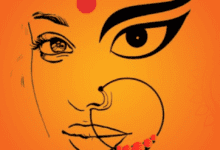Gopal reviews the book, How That Abode Would be, authored by Vehshi Syed, in Urdu, and translated by Mushtaque B. Barq, into English. An exclusive for Different Truths.

Book: How That Abode Would Be
Author: Vehshi Syed
Translator: Mushtaque B. Barq
Vehshi Syed’s collection of short stories titled ‘How That Abode Would Be’ draws attention to the ability of allegory to offer a means of making something of the impossible and turns dreams into remarkably creative. This collection of stories is translated from Urdu to English by Mushtaque Barq. Armed with a sharp, scholarly rigour, he has produced a translation that explores the in-depth readings of the stories reaching far into our lives and changes the way the story is read in English.
In his introduction, Shafi Shauq has pointed out, ‘Mushtaque Barq’s English version of Vehshi Syed’s stories, chosen from his several collections of fiction, is a significant contribution of fiction, to such literature as is aimed at the portrayal of the life of individual characters representing a community living in a land.’
In his introduction, Shafi Shauq has pointed out, ‘Mushtaque Barq’s English version of Vehshi Syed’s stories, chosen from his several collections of fiction, is a significant contribution of fiction, to such literature as is aimed at the portrayal of the life of individual characters representing a community living in a land.’
Short stories can also be a welcome diversion from the barrage of images we’re often submitted to the long narratives. The writers feel sometimes it’s worth showing less and hiding more and that is the essence of the short story. There are in all twenty-seven stories in this collection and the translator showed sense and sensibility in keeping the style supple for shaping the settings and moments, never losing the clasp of the original text. The book is always animated, allegorical at times, teeming with ideas, full of energy, change, memory and boldness.
It is rightly mentioned in the ‘Introduction’, “what makes these short stories so vivid is that Vehshi Syed has brought truth and reality before the reader by taking refuge in the inn of fiction. So, his fiction is not merely decked up with sugar-coated adjectives but copious with his observations and experiences.”
We all know that Kashmir valley is plagued by continual terror and violence because of the power struggle. The well-crafted and incisive stories written by Vehshi Syed explore the complexities of life in the valley and elsewhere and also evokes different emotions in the readers’ mind.
We all know that Kashmir valley is plagued by continual terror and violence because of the power struggle. The well-crafted and incisive stories written by Vehshi Syed explore the complexities of life in the valley and elsewhere and also evokes different emotions in the readers’ mind.
Characters can’t put anything behind them, and indeed many of them don’t want to, anyway. They prefer to live in the moment of loss, as though they were their own ancestors’ ghosts, refusing to let the past become past. The author depicts human misery and despondency in the form of fictional characters and events.
He would reveal in his soliloquies ‘I have to pull myself from the quagmire of abjection. I have to unfasten myself from the clutches of poverty and have to bedeck my own world, the world that would compel others to wonder if such occurrences really take place.’ (How That Abode Would Be)
The racy narrative of the stories gives a new approach in an allegorical/surreal form to dissect the goodness or evilness of the society and recounts the historical horrors of running through the fire and heat, death and destruction in the valley.
The racy narrative of the stories gives a new approach in an allegorical/surreal form to dissect the goodness or evilness of the society and recounts the historical horrors of running through the fire and heat, death and destruction in the valley. Time in Vehshi’s world both creeps forward and stands still,
Breaking the queues, the beauties ran in the direction wherein, the elixir of life was generating ecstasy. All of them quenched their thirst in the fountain of the elixir of life. After they satiated their thirst, they stood with their heads high. Now they were in possession of the elixir of life. They were immortal once and for all. (Elixir of life)
His densely packed stories are all about the vices and virtues of human beings interpreted through different visions and perspectives. There is no denying that the political overtone is palpable as those shadow people’s fight for power and the commoners suffering continue till the end.
“When people will come to know that the minister and his wife have committed suicide owing to their son’s unruly behaviour, the party policies of justice will automatically win their hearts and they will vote for us for the next five years.” The Chief Minister announced. (Possession, Power and Politics)
In ‘The Invisible Criminal’ the narrative is chiselled by the convergence of unreal thoughts in order to shed life on the real lives. With shrewd observations and sharp anecdotes, the author plumbs the depth of conflicts with a twist at the end and provides food for thought.
In ‘The Invisible Criminal’ the narrative is chiselled by the convergence of unreal thoughts in order to shed life on the real lives. With shrewd observations and sharp anecdotes, the author plumbs the depth of conflicts with a twist at the end and provides food for thought.
I leaned against the railing of the Amirakadal Bridge and all of a sudden in the waves of Jhelum I observed that ‘He’ appeared in various human forms before me demanding. ‘Friend, have you thought about exposing the invisible criminal so that the agitated souls will rest in peace?’ (The Invisible Criminal)
There is a deep congruence between the movements of the author’s mind, with its sense of the history, religion and culture of his region, with its anxious inquiries and connections, so deep that it hardly seems possible to distinguish between them.
Most of his fantasy stories are inspired by rituals, symbols, mythical allusions, and imageries. In the following story, the imagery comes through in an extraordinary manner in a conversational elegance.
“You are a deity”, Aristotle declared
Nagraj smiled.
“Aristotle, do play you been and let the girl dance to inebriate me.”
Aristotle responded and the girl started to dance. Nagraj was engrossed in it when he suddenly ordered the performers to stop.
“Stop Aristotle…. Someone is coming.” (The Avenging Redeemer)
These emblematic figures and the political implication between belief and fiction, myth and allegory that we find in these riveting stories are portrayed with skill and purpose.
These emblematic figures and the political implication between belief and fiction, myth and allegory that we find in these riveting stories are portrayed with skill and purpose.
Always an acute observer of cultural tracks and oddities, the writer shines with wit and erudition and at the end reserves his sharpest satirical spikes for the most deserving targets as evident in the story
The people searched for the parrot for they had to set a picture of the parrot by the building so as to tell the next generation that a parrot from a magic city had once occupied the ‘Seat of Justice.’ (The Parrot of the Museum)
Vehshi’s vision of the locale is grim and unforgiving, yet in its unmasking of the harsh reality behind the gleaming facade, it is revelatory and passionately human.
Vehshi’s vision of the locale is grim and unforgiving, yet in its unmasking of the harsh reality behind the gleaming facade, it is revelatory and passionately human. The writer has highlighted the contemporary issues and the level of detail he marshals is impressive, if not overwhelming in its coarseness and covers a wide trajectory.
Roshan tried to locate her mother but soon she recollected that her mother had died two years back.
Roshan stared at the sky; the moon was surrounded by innumerable stars. She kept gazing at the starry roof above and smiled as recalled this statement of her mother:
“The sky is not so vast to be clasped in my fist.” (‘A Fistful Sky’).
The translator portrays the influence of images and their elusiveness and complexities as depicted in the original with expressionist clarity and feelings.
The stories encompass class, religion and generational conflict, the recursive nature of history, how the individual’s struggle for freedom in a compromised world is a reflection yet ultimately a negation of embedded systems, of the corrupting influence of the status quo. The translator portrays the influence of images and their elusiveness and complexities as depicted in the original with expressionist clarity and feelings.
‘How That Abode Would Be’ is an original and welcome addition to the contemporary writings for its disconcerting timeliness, already teeming with disparate timbre and for a portrayal of a landscape and a way of life that is already a part of the history.
The book will definitely be striking a chord with its readers. It delves into complex themes with ease and resolve. The most striking part of the book is how Mushtaque Barq translates both lyrical tone and lush prose of the original Urdu writers of Vehshi Syed into character-revealing stories in the English language.
The book will definitely be striking a chord with its readers. It delves into complex themes with ease and resolve. The most striking part of the book is how Mushtaque Barq translates both lyrical tone and lush prose of the original Urdu writers of Vehshi Syed into character-revealing stories in the English language.
Gripping, starkly innovative and beautifully perceived, this is an unusual and deeply rewarding collection of short stories that are both politically resonant and curiously appropriate to our existing dilemma.
The cover design is entrancing. This insightful short story collection is a must for every book shelf.
Photo sourced by the reviewer





 By
By
 By
By
 By
By
 By
By
Thanks Gopal ji for such an indepth review
Very nice review. The stories have found a new dimension. Vehshi Syed as a story teller n Mushtaq Barq as a translator have achieved new height in their respective fields. Now i congratulate all three from the bottom of my heart. And the third one is of course the reviewer.